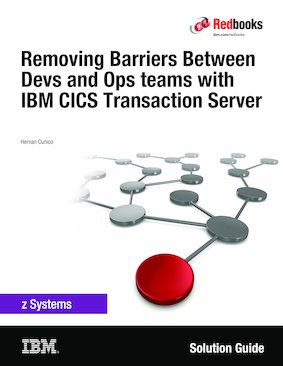
Published on 19 February 2016
Read in Google Books
Share this page:
ISBN-10: 0738455113
ISBN-13: 9780738455112
IBM Form #: REDP-5335-00
Authors: Hernan Cunico
Abstract
To speed the release of new applications and updates, the IT industry is seeking to apply agile and lean principles to development and deployment. At the core of these principles is eliminating wasted work, breaking down artificial barriers between related functional teams, and adopting continuous release cycles that push improvements out to users faster than ever.
In response to this effort, a new, more aggressive, and business-driven approach called DevOps has emerged. DevOps combines many traditional development and operations activities such that applications can be built, deployed, rebuilt, and redeployed in rapid cycles (Figure 1). The result is continuous, incremental improvements that drive new features into the marketplace with minimal impact on users and more efficient use of IT staff.
IBM® CICS® Transaction Server has long been the workhorse of the global financial community. Now, with the latest release, CICS Transaction Server V5.3 supports DevOps-based organizations, too. Two capabilities in particular, the CICS build toolkit and a CICS plug-in for IBM UrbanCode™ Deploy, can help teams break down the long-standing walls between development and operations teams.
This IBM Redbooks® Solution Guide provides an overview of the features and capabilities of CICS Transaction Server V5.3 and shows how you can use this solution to help your DevOps team build and deploy solutions more quickly and efficiently.
Table of Contents
Did you know?
Business value
Solution overview
Solution architecture
Usage scenarios
Supported platforms
Ordering information
Related information